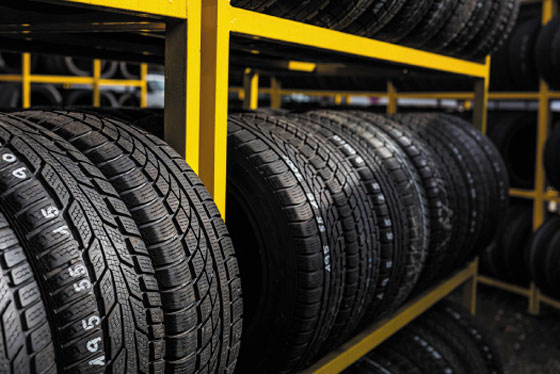Rubber

Rubber
Rubber is a versatile and indispensable material used in a wide range of applications—from automotive tires and footwear to medical devices and industrial equipment.
Its unique properties of elasticity, strength, and water resistance are achieved through a key chemical process known as vulcanization, which transforms raw rubber into a durable and stable material.
Zinc oxide plays a critical role in this transformation. It acts as an activator in the vulcanization process, ensuring faster reaction rates and improved crosslinking efficiency. This results in rubber products with better tensile strength, tear resistance, and aging stability—qualities essential for demanding industrial and consumer uses.

Latex
Latex is the liquid polymer precursor to solid rubber. It can be processed in its liquid state to form thin elastic films, as found in gloves, balloons, and medical products.
During latex compounding, zinc oxide is mixed into the formulation as an activator and stabilizer. The molds are then dipped, dried, leached, and finally heated for curing (vulcanization)—producing strong, elastic, and chemically stable films.
In latex processing, zinc oxide ensures:
- Efficient curing for uniform film strength.
- Reduced chemical residues, improving product safety.
- Enhanced elasticity and stability over prolonged use.
Product link
The Role of Zinc Oxide In Rubber Manufacturing
1. Vulcanization Activator
Function: Zinc oxide is an essential vulcanization activator, promoting the crosslinking of rubber molecules with sulfur to enhance elasticity and strength.
Mechanism: It reacts with fatty acids (e.g., stearic acid) to form zinc stearate, which accelerates the sulfur crosslinking reaction. Without zinc oxide, vulcanization would be slower and less effective.
2. Improved Mechanical Properties
By promoting stronger crosslinking, zinc oxide improves the mechanical properties of rubber—providing greater tensile strength, tear resistance, and abrasion resistance.
3. Antioxidant and Anti-Aging Properties
Zinc oxide helps neutralize acidic byproducts formed during vulcanization and use, protecting rubber from degradation and extending its service life.
4. UV and Heat Resistance
- UV Protection: Absorbs ultraviolet radiation, preventing photo-oxidative degradation caused by sunlight.
- Heat Resistance: Enhances thermal stability, maintaining performance in high-temperature environments.
Our Zinc-Based Products For Rubber Applications
|
Product |
Description |
Key Benefits |
|
Standard activator for all rubber types |
Reliable performance, broad compatibility |
|
|
High-surface-area zinc oxide with enhanced reactivity |
Improved vulcanization and crosslinking |
|
|
Also known as transparent zinc oxide |
Ideal for translucent or specialty rubber |
|
|
PCC’s patented Controllable Structure ZnO |
Superior dispersion, reduced zinc content, eco-friendly |
Why Choose Pan-Continental Chemical?
-
Comprehensive Product Line:
From standard zinc oxide to advanced active zinc oxide and zinc carbonate, we provide complete solutions for various rubber and latex applications.
-
Decades of Expertise:
Founded in 1979, Pan-Continental Chemical (PCC) is a trusted global supplier of high-quality zinc compounds and performance chemicals.
-
Custom R&D Support:
Our in-house R&D and QC teams can collaborate with customers to develop solutions for specific rubber formulations and processes.
-
Sustainability Commitment:
PCC leads the shift toward greener manufacturing with innovations such as CS AZO®. By reducing our carbon footprint, we help our customers reduce theirs as well.
Frequently Asked Questions (FAQ)
Q1: Are activators necessary in rubber vulcanization?
A: Yes. Activators like zinc oxide react with accelerators and sulfur to promote crosslinking, producing rubber that is stronger, more elastic, and longer-lasting. Without activators, the vulcanization reaction would be much slower, with poor results.
Q2: What chemicals are commonly used as rubber activators?
A: Typical activators include zinc oxide, active zinc oxide, and zinc carbonate, available in multiple grades to suit different rubber formulations. Please reach out to Pan-Continental Chemical to find the best solution for your application.
Q3: What is the difference between Zinc Oxide and Active Zinc Oxide?
A: They are produced using different methods. Active Zinc Oxide comes from recycled materials, which are then chemically processed to form zinc oxide. It not only aligns with sustainability principles, but also boasts low impurities and high surface area (BET).
Q4: What is CS AZO®?
A: CS AZO® is a patented variation of Active Zinc Oxide, developed by Pan-Continental Chemical. Its structure leads to better dispersion in rubber. In addition, it contains less zinc than conventional zinc oxide and is produced with a smaller carbon footprint. It is a next-generation, environmentally friendly alternative to conventional zinc oxide.





